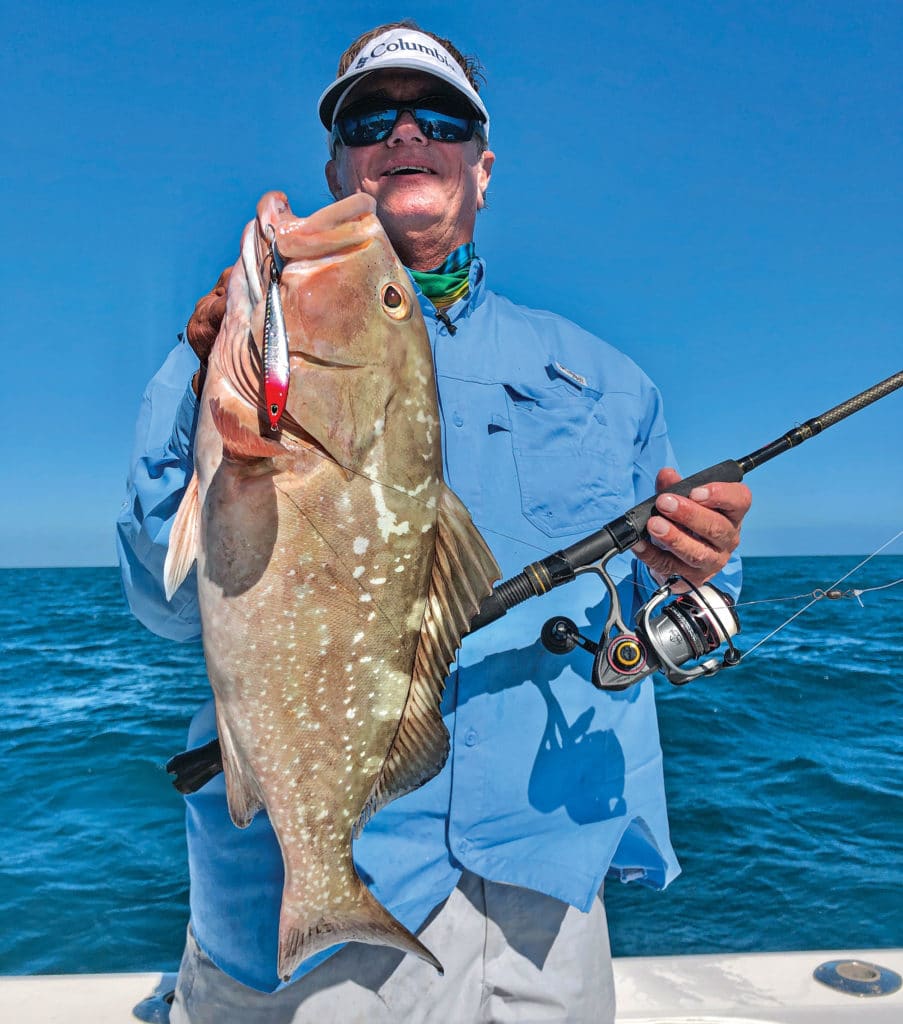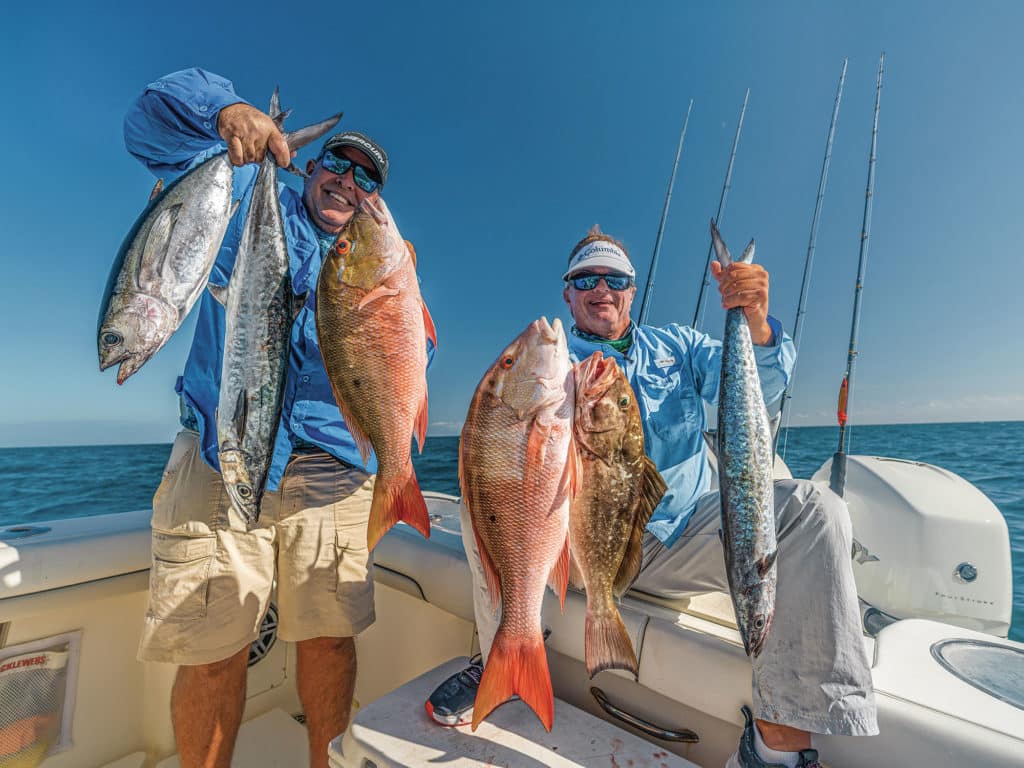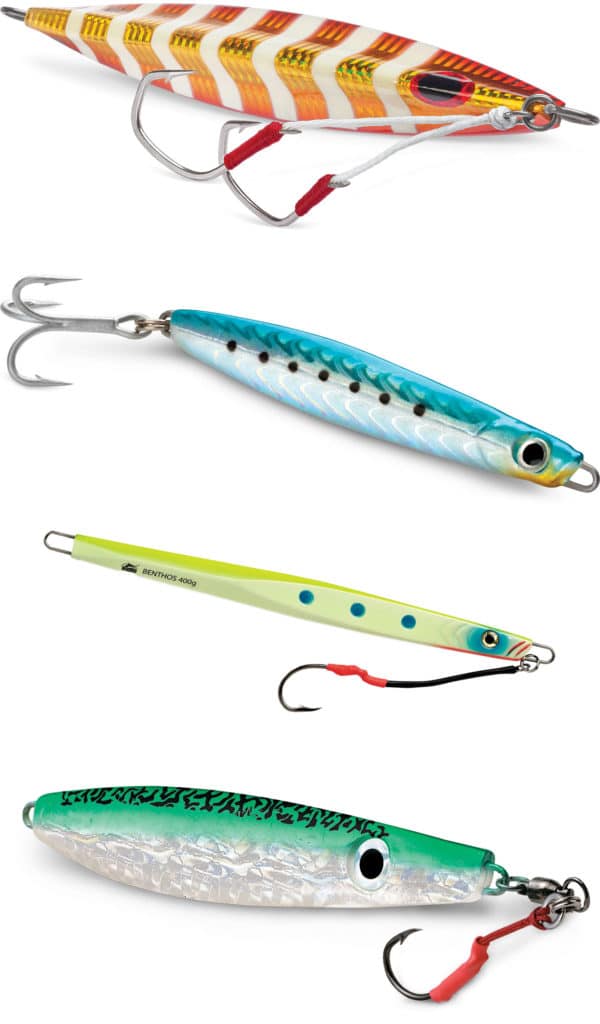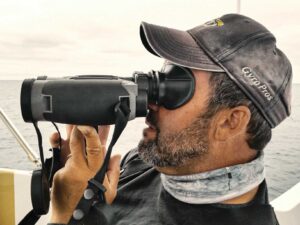
Yesteryear’s deep-jiggers had it easy, choosing from just a handful of basic head designs and colors. Pinning on a bait or plastic worm constituted a major modification. With paint schemes depicting nearly every ocean creature, flutter and slow-pitch jig designs dominate today, and for good reason: They catch fish.
Despite similarities in appearance among various manufacturers, it’s their action that sets jig models apart. Compared to traditional deep jigging, where 90 percent of lure action is angler-driven, it’s the reverse with flutter-type irons: The shape of a flutter jig or speed jig determines its basic movements.
Beyond that, aggressiveness is dictated by the body profile and thickness, weight distribution, and deviation in body alignment (bends or curves). Of course, anglers also have a hand.
Flutter jigs come ready to fish. However, their potential can be tweaked. The following modifications enhance their actions and hookups, whether they’re old beat-up irons or brand-spanking-new ones.
Bend a Fishing Iron for More Action
Flutter-style irons come with straight or offset bodies, the latter curving slightly along the head, middle or tail section. The offset design results in a more erratic, darting motion, particularly during the fall.
Bending an iron is perfect for those old, fish-scarred, straight designs (even offset ones). Wrap one end of the iron in a towel, place it in a vice grip, and use pliers to bend or a hammer to tap out an offset to your liking. Be subtle because some bodies can break. The varying degrees of offset among the same models provide a broader selection of actions; one just might be the ticket during an off bite.

Upgrade to Tandem Assist Hooks on Metal Jigs
Beefy Dacron and extra-strong assist hooks are common on many brands. They’re perfect for fighting large fish on relatively heavy tackle. However, with 12-, 15- and 20-pound lines, and especially when probing depths approaching 300 feet, a thinner diameter will convert more strikes to catches.
What’s more, a single hook provides one shot at nailing a fish. Should the iron interfere with the hook during the strike, it’ll be a miss, or a fish lost during the fight.
I’ve been replacing the single-hook -assist on some of my flutter irons, both old and new, with a tandem assist. Several companies market such components, including VMC with its TechSet Tandem Assist Hooks. The VMC hooks are smaller in diameter, and the gap between the point and shank is wider too, both traits deliver better hookup percentages. Furthermore, they’re strong and not prone to straightening.
Jigging for Blackfin Tuna
Diego Toiran and I recently spent a day jigging for blackfin tuna and bottomfish off Cudjoe in the lower Florida Keys. Admittedly, I stacked the deck against him with my tweaked irons.
As if scripted, Toiran missed a few blackfins before scoring with his single-hook flutter jig. I caught every blackfin that slammed my irons with the TechSet Tandem Assist modifications.
The scenario repeated on the reefs: I alternated between slow-pitch and flutter jigging with the tandem setup and converted nearly every strike.
Toiran scored too, but missed more opportunities. It didn’t take complex math to show us that dual hooks doubled the chances of success, at least on this particular day.
Where to Tie Your Leader on a Metal Jig
Most stock assist hooks are affixed to a solid ring eye, to which the line should be tied; never tie it to a split ring. Split rings are a bad option because the leader can sometimes work its way off the split ring entirely. If the jig has a solid ring, tie to that, or add a solid ring to a split ring.
There is no controversy over where to tie an assist hook to a flutter style jig. A lot of people like the head area, where the assist parallels the body of the jig, whereas others tie to the bottom, where the assist trails the body. The latter is preferred when speed jigging straight up through the water column (read no true jigging) for wahoo, king mackerel, and other lightning-fast predators. Even with jigging, some anglers like the assist hooks away from any body interference during the strike.
In short, one can argue the ways to rig assist hooks to flutter jigs, and still be correct. Different strokes for different folks.
Where to Rig Assist Hooks on a Metal Jig
When changing out hooks, attach the solid ring eye on the Dacron assist cord to the split ring that’s on the jig. Tie the fishing line to the solid ring eye. If necessary, upgrade the split ring and go to a multicoil design.
Hook location is a personal choice. Most of my flutter jigging is for bottomfish and tuna, so I prefer the assist hooks at the head of the lure. Most of these species engulf a jig, so hookups are usually solid.
However, for king mackerel and wahoo, I like the hooks at the iron’s tail. When dropping under floating boards and weed lines for these toothy gamefish, there is no jigging per say, but rather a fast, steady retrieve.
The hope is that a fish will strike behind the head and get hooked by the aft assists, sparing the fluorocarbon or mono leader.
A short, single-strand wire trace, either titanium or nylon-coated, seems to last for maybe one fish. Nonmetallic leaders draw far more strikes, though you’ll lose a jig here and there.
King mackerel and particularly wahoo often bite right through Dacron assist cords rigged at the top of the lure. Add a wire assist hook connection and strikes will diminish. Yet here’s a trick: Fabricate titanium assist leads inside shrink tubing. In addition to hiding the wire, the snug-fitting tubing will reduce or quell vibrations associated with metal leaders. Why titanium? It’s less prone to kinking when jigging aggressively, and thus less likely to develop weak spots that might snap during the fight.
Add Blades to Your Metal Jigs
Could a spinner blade make a jig even more potent? Distressed or injured prey emits predator-attracting vibrations. Flutter jigs produce similar vibrations. I’ve recently affixed spinner-style blades to some jigs to increase their sonic appeal. For salt water, VMC has introduced a 4X-strong Bladed O’Shaughnessy short-shank treble hook featuring a willow blade on a swivel. I replaced the stock trebles on some of my smaller Williamson jigs with the blade series. During my trip with Toiran off the lower Florida Keys, the bladed irons produced grouper, yellowtails, mackerel and even a cobia.
Would these fish have fallen for the same iron minus the blade? I was sold on how good they looked going through the water, the blade a-flashing and vibrating. And so were those fish.
Read Next: Slow Pitch Jigging

- Kensaki (top): Designed for a lift-and-fall retrieve, it darts aggressively upward during the lift, followed by a horizontal flutter on the fall.
- Gomoku: The long, symmetrical shape yields erratic action with a fast retrieve. The rear hook keeps sharp teeth away from the line.
- Benthos Speed: The long, tapered, diamond-shaped body is designed for quick, deep vertical drops.
- Vortex (bottom): The opposing convex and concave sides create an enticing spinning action during the fall.









